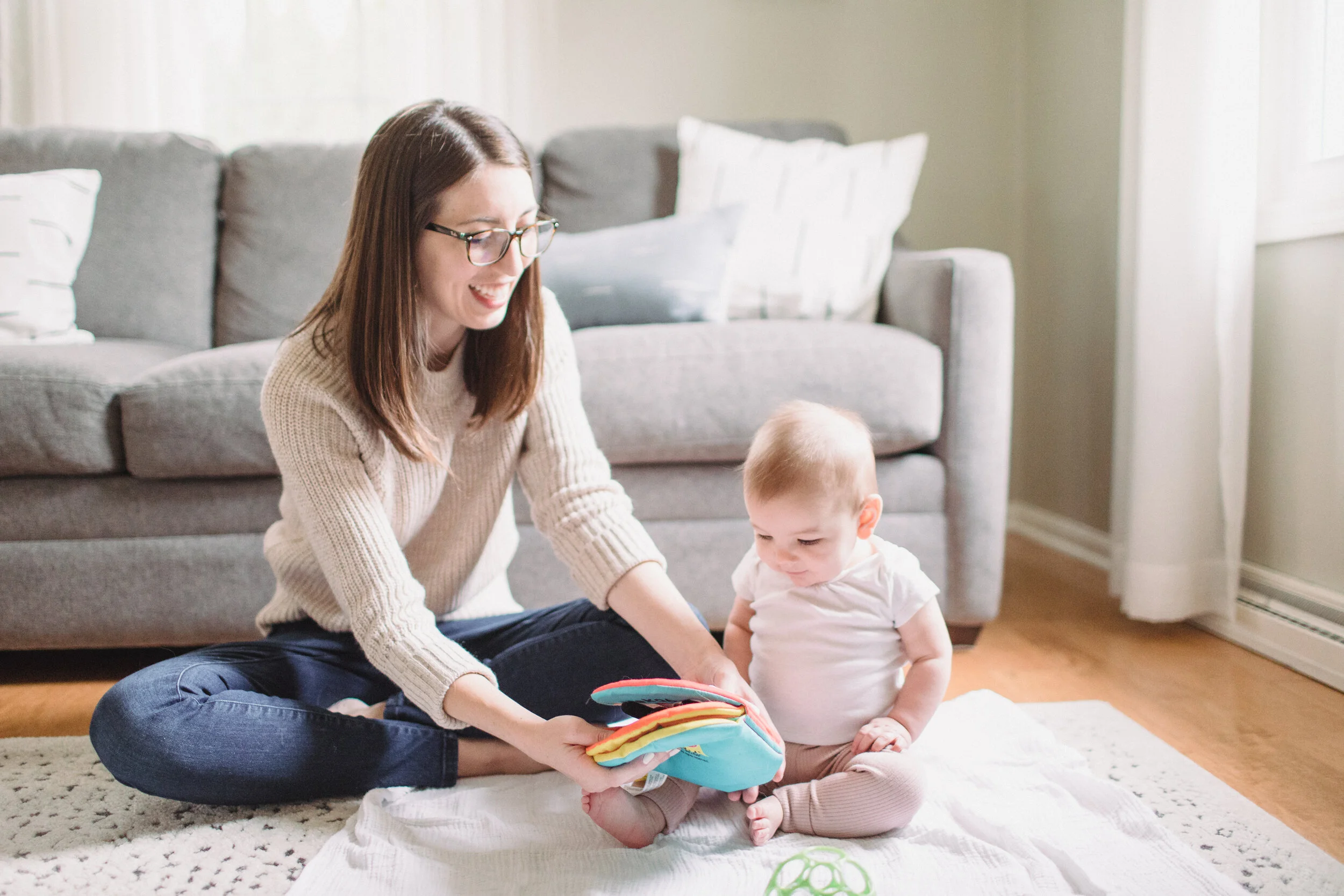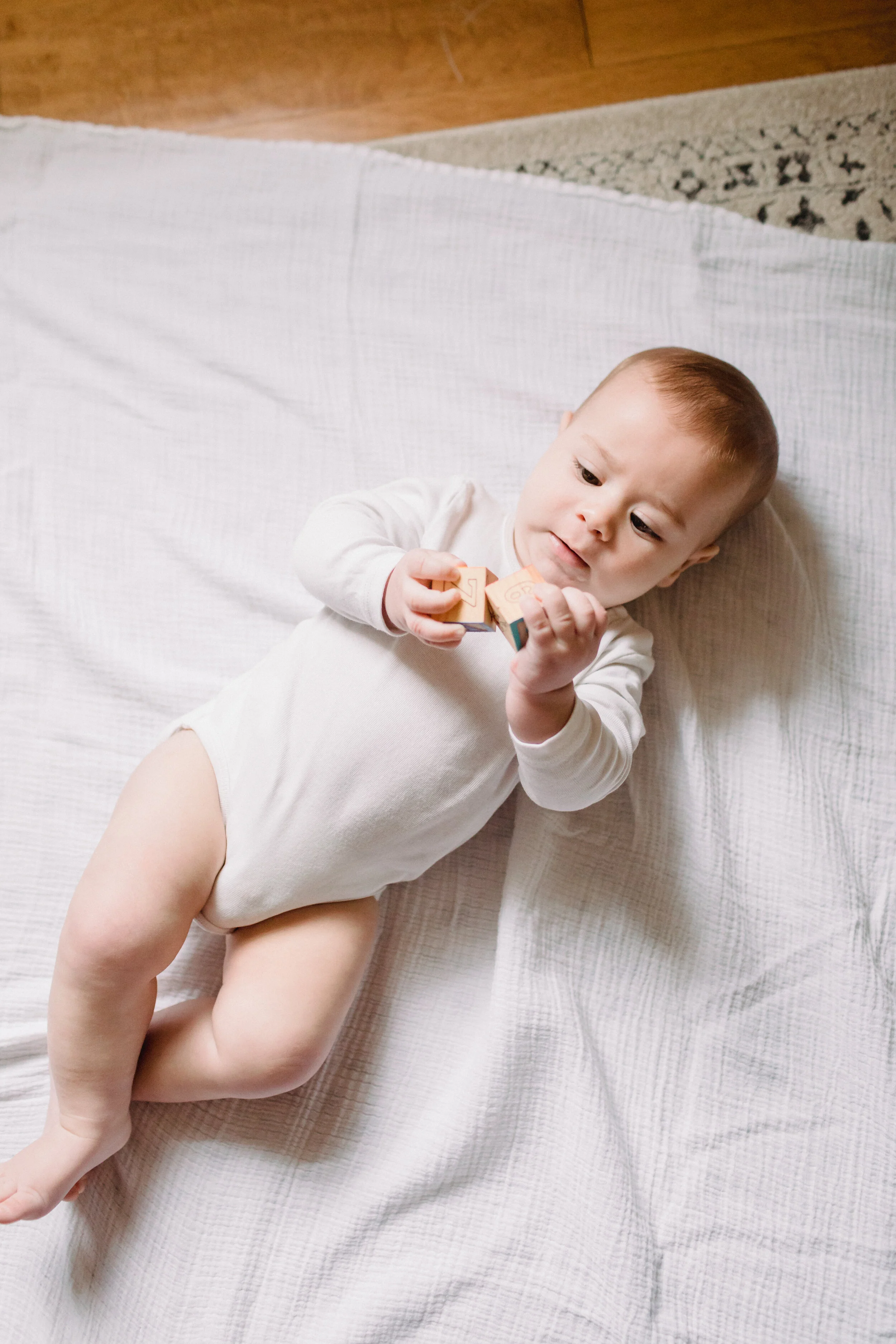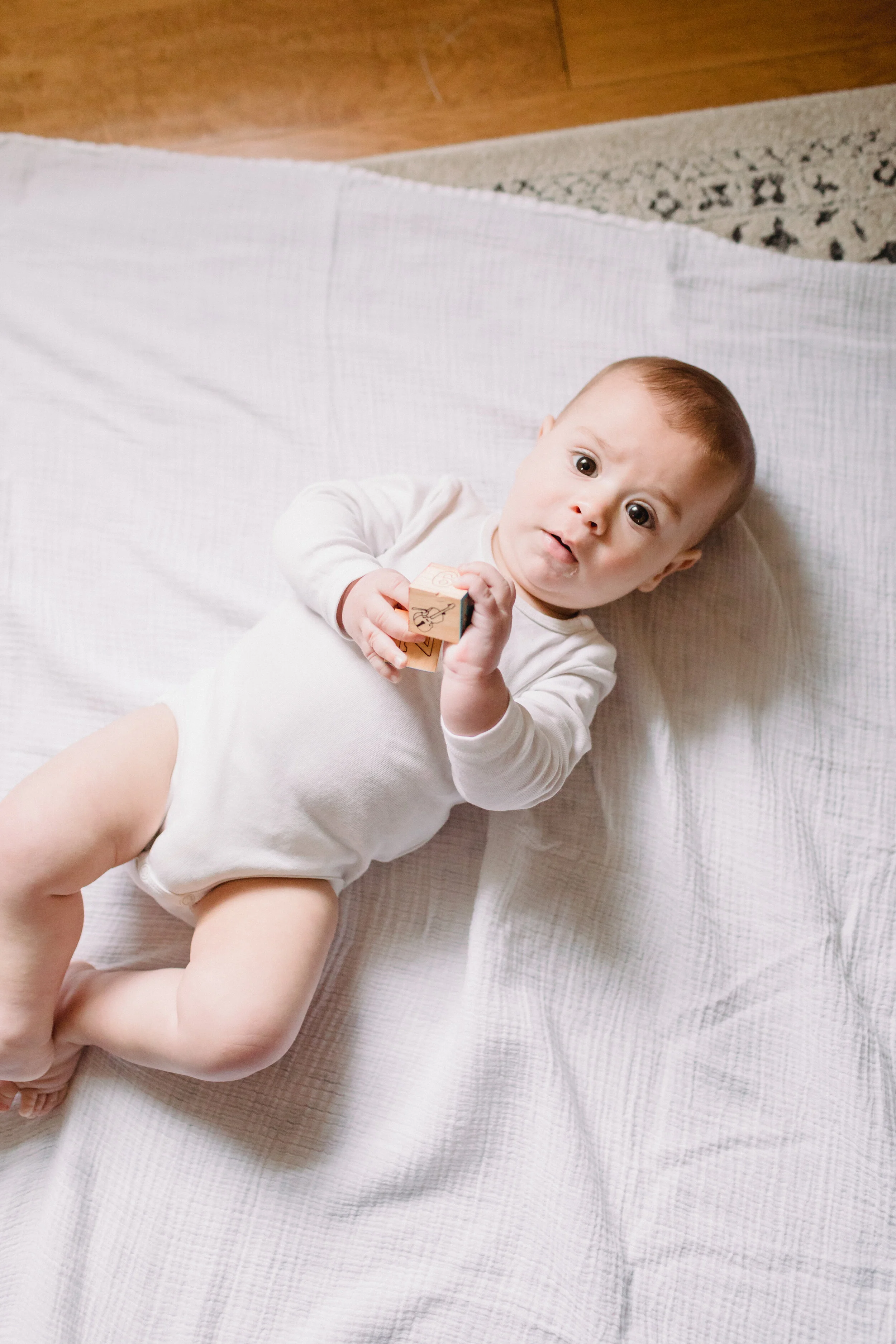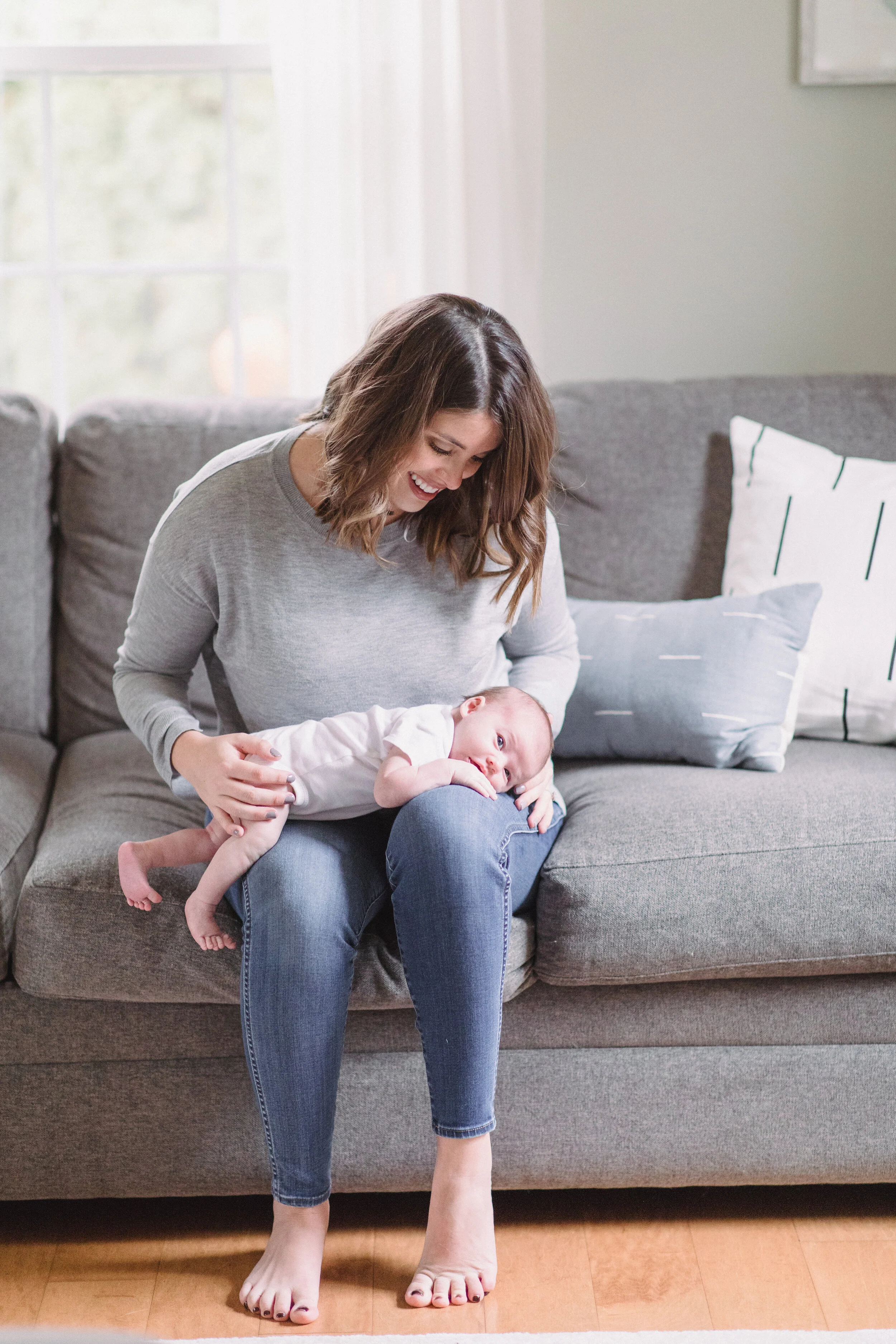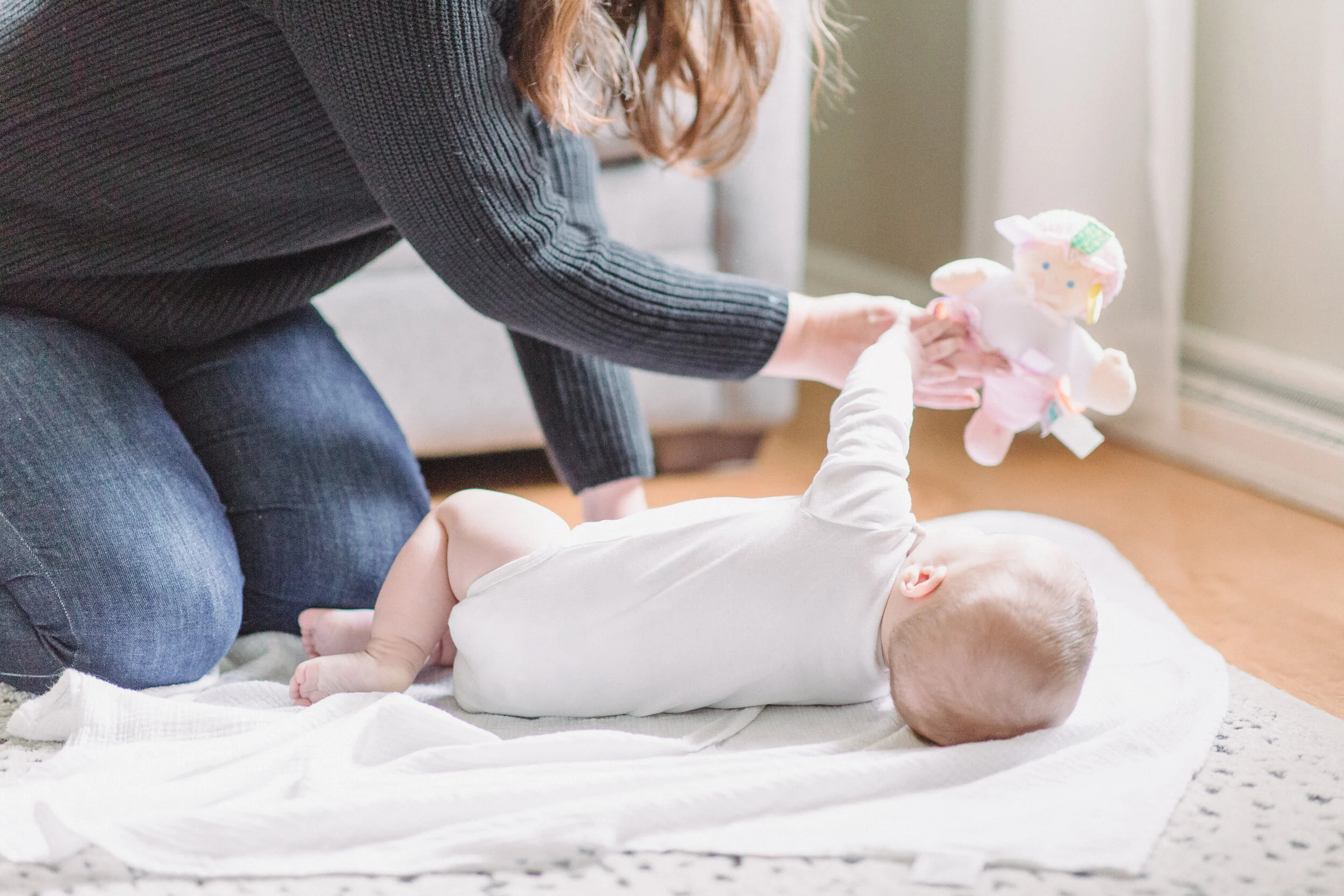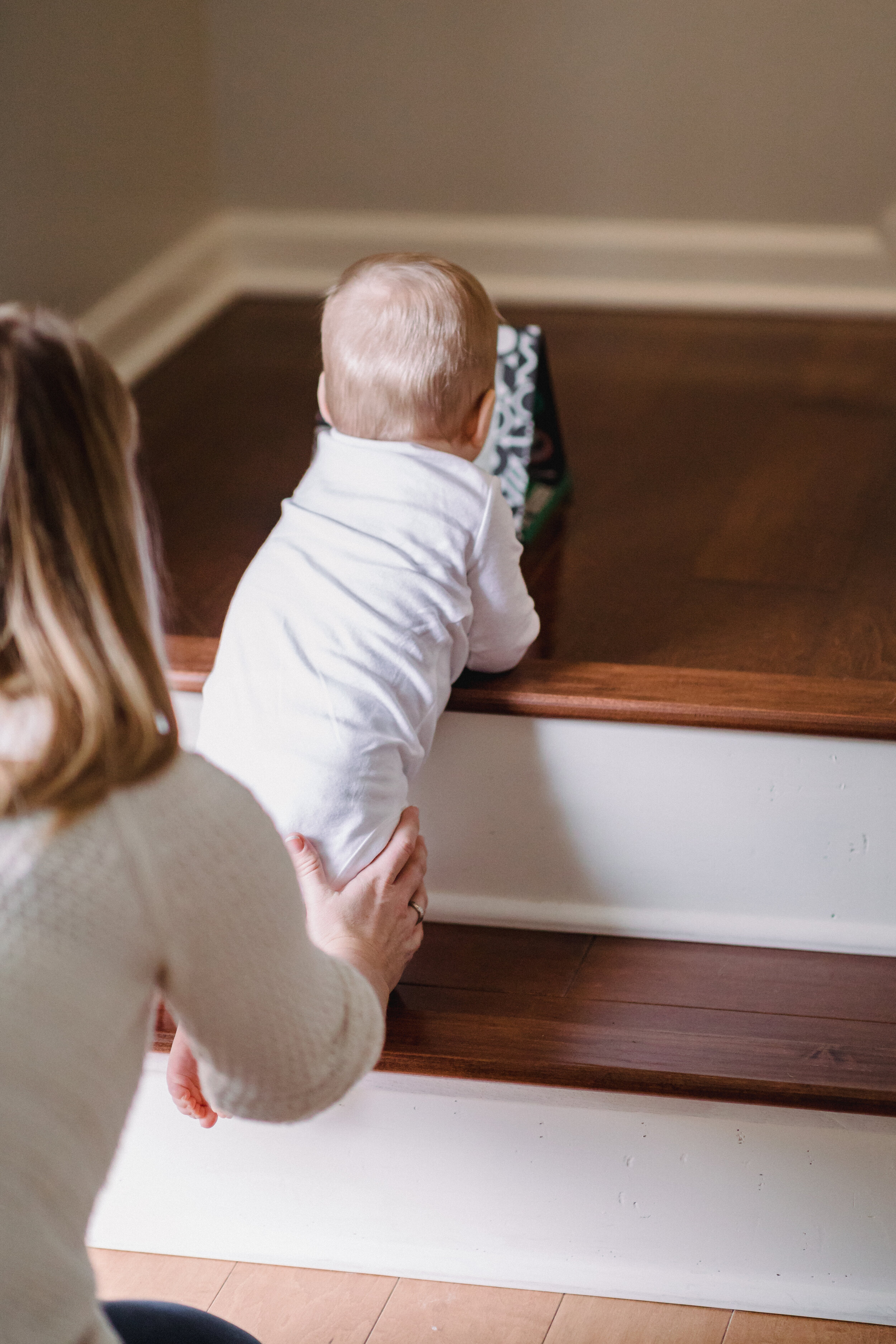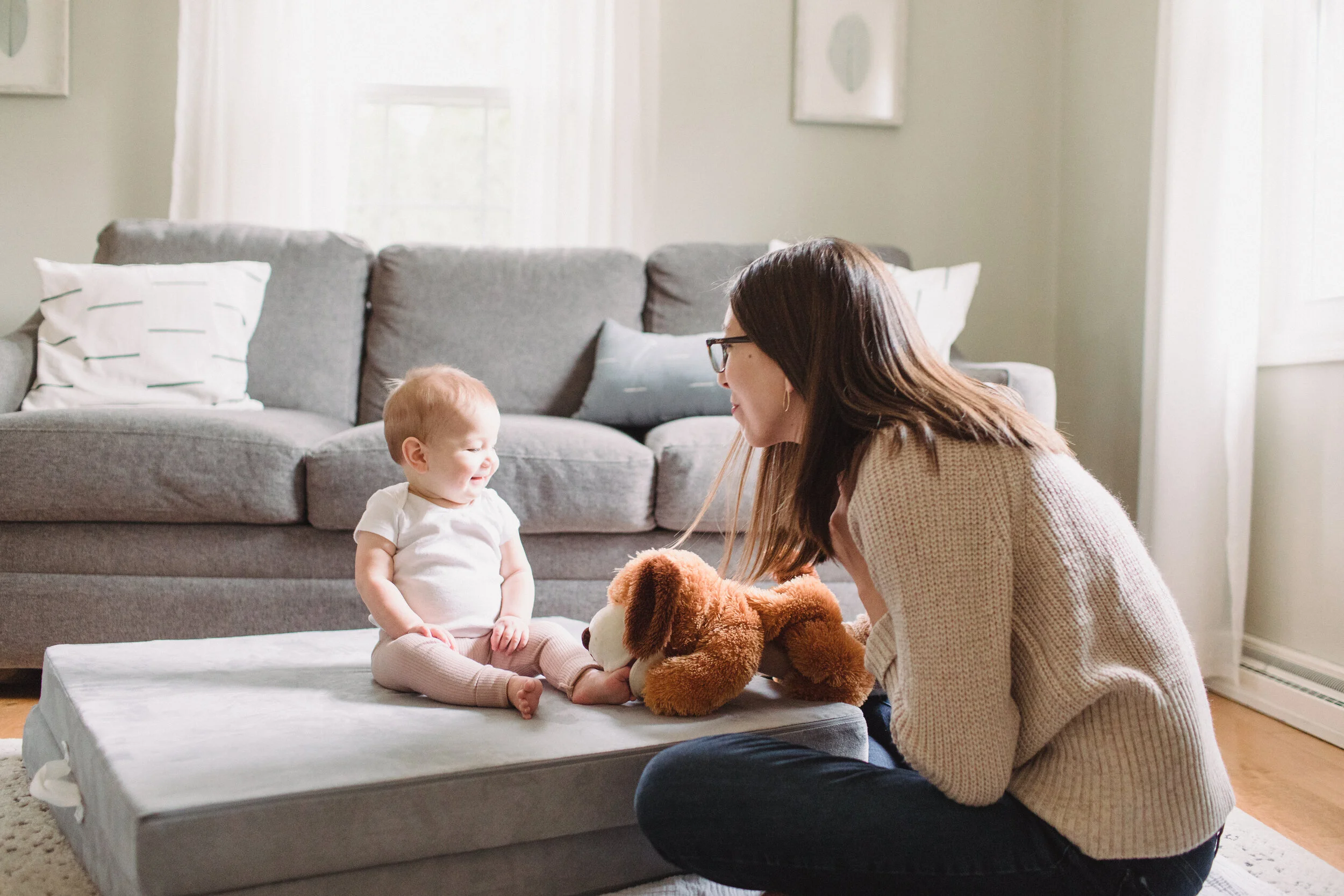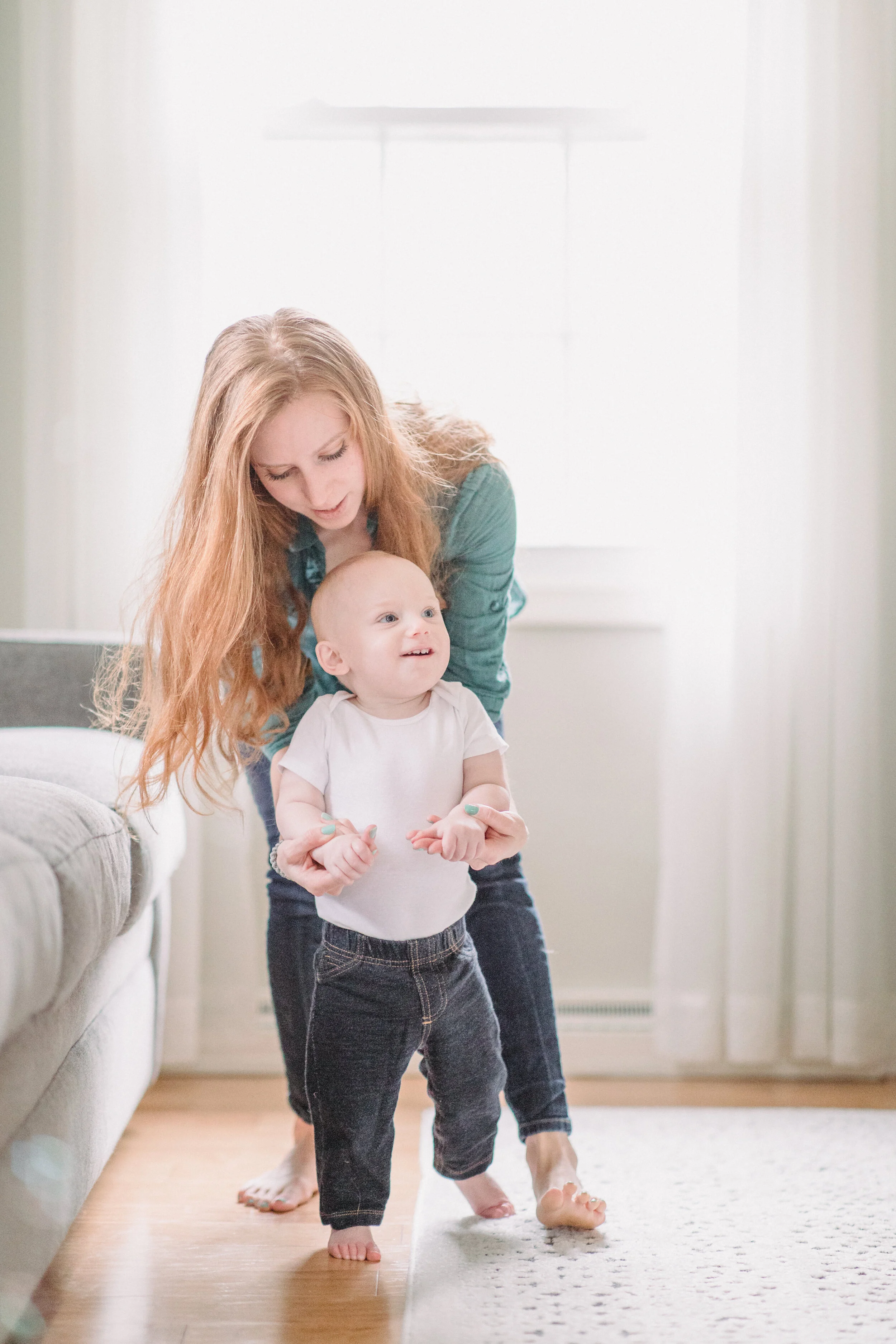New physical clinic space is opening in Snohomish, WA. Current clients will continue to be seen in their homes and may transition to the clinic space in early summer.
Bree is continuing to offer in-home, virtual, and online courses as the clinic gets up and running.
Book today!
Favorite Products- Feeding
Floor Play Ideas for Every Stage of Development
Parents often hear that tummy time is important for babies but research supports that floor play is actually very important for every stage of baby’s motor development. That’s why we’re passionate about our “The Floor Builds the Core™” concept which states that a baby gets stronger and masters motor skills by learning how to move in and out of positions while they’re on the floor.
More info here on the movement science behind our “The Floor Builds the Core™” framework.
How to Play with a Wobbly Sitting Baby
Did you know that sitting is only functional if you can do something there - like reach or watch something? Well, being placed in sitting but not being able to do anything, reach for anything, play, or get in and out of the position isn’t very functional for baby. And you know we’re all about functional play around here! Below you’ll find ways to play with your babe throughout the progression of learning to sit .
Reading with a Baby - Play Ideas for the First Year
Children who are read to regularly at home throughout early childhood will be exposed to exponentially more words than their peers who are not regularly read to. By the time they reach kindergarten, children will have heard 290,000 more words if read 1 book each day and 1.4 million more words if read 5 books each day (Logan, et al., 2019). Here you’ll find ideas on HOW TO read with a baby from birth through the first year.
Baby's Hands - The Foundation to Dexterity
Keeping Baby Busy While Working From Home
Signing with Babies
New Parent Hacks - How to Avoid Baby Containers and Still Get Through Your Day
So you read our post on avoiding baby containers and now you’re wondering how you’ll get through a busy day while still sneaking in a shower or making dinner without using all of the baby contraptions like a swing, bouncer, exersauser, jumper, or Bumbo? We’ve got you covered!
Baby Containers - How and Why to Avoid Them
Baby gear/contraptions/containers all refer to a piece of equipment that puts a baby into a position and keeps them there. Gear like a swing, bouncer, exersaucer, jumper, or Bumbo. Most of this gear puts baby into a position they are not yet ready to maintain on their own and can not get into/out of on their own - meaning it’s not developmentally appropriate for them. Containers prevent a baby from moving in and out of positions naturally! Developmentally speaking, the devices pictured above, generally put babies into positions their little bodies are not yet ready for and they prevent baby from freely moving.
Sitting - How to Teach a Baby to Sit
How to Choose a High Chair
Tips for choosing the best highchair positioning for your baby. Optimal positioning for feeding can help baby feel more secure and set you both up for mealtime success. Browse our favorite highchairs or get ideas for how to modify your current highchair to best fit your baby’s needs before starting solids.
Favorite Products- High Chairs
Tummy Time Positions for Newborns
Many new parents have asked us, “What do I do with a newborn all day?” Our answer: Take that nap and when you wake up, spend time holding, snuggling, and getting to know your baby in those early days, and from day one, get baby on his/her belly regularly! All future movements your baby will learn start in tummy time.
How to Encourage Your Baby to Roll
Rolling is one of baby’s first forms of mobility. It allows baby to start the process of seeing something and actually going to get and explore it. Rolling is a complicated movement that requires the two sides of the body to do opposite movements. This is important for the brain- body connection (i.e., how the body learns to respond appropriately when the brain says “reach”), to build neuronal maps (i.e., how baby will learn to move in 3D space), to strengthen bilateral coordination skills (i.e., to use both sides of the body), and is preparing baby to develop more complex movements.
How to Encourage Your Baby to Crawl
Crawling is extremely important for hand skills later in life. As baby puts weight through the shoulders, forearms, wrists, hands and fingers, he/she is developing strength, dexterity, hand-eye coordination, and sensory integration that will be used later in life to support many skills, including a functional grip when holding a fork at mealtime, handwriting, and zipping a coat.
What to do if Your Baby Skipped Crawling
You probably know someone or have at least heard stories of people who skipped crawling, went straight to walking, and “turned out just fine.” We’ve met these people too! If your baby skips crawling, he/she WILL probably be just fine, BUT we are here to make a case for not “skipping” this milestone and circling back to it if your baby did not, or only briefly crawled on hands and knees before walking.
How to Encourage Your Baby's Communication
Although you may jump right to thinking about baby’s first word when you think of communication development in the first year, there is so much that needs to develop in baby’s brain before we can expect to hear that first precious “mama” or “dada.” We use the term communication to encompass many aspects of speech and language development, including vocabulary (i.e., how many words a child says), articulation (i.e., how words are formed in the mouth), language expression (i.e., what a child says) and comprehension (i.e., what a child understands), gesture use (e.g., waving), and social skills (e.g., eye contact, turn-taking).
8 Tips for Enhancing Speech & Language Development
You’re likely already spending time each day talking, reading, and playing with your baby. Engaging and bonding with your baby with these three activities when you can throughout the day are likely all he/she will need to develop communication skills on time. But not all interactions are created equal when it comes to enhancing speech and language development. All children will develop at their own pace, but making a few small changes to how you talk to your baby can make a big impact on your child’s ability to both understand and use language when he/she is ready.
How to Encourage Your Baby to Take First Steps
One of my most commonly asked questions from parents is, “How do I teach my baby to walk? He seems close!” Without seeing your child, it’s hard to say exactly why he isn’t walking yet, but it is most often because he needs to do a little more strength and endurance work before he is really ready to take those first dynamic steps unsupported- it is a ton of work!






